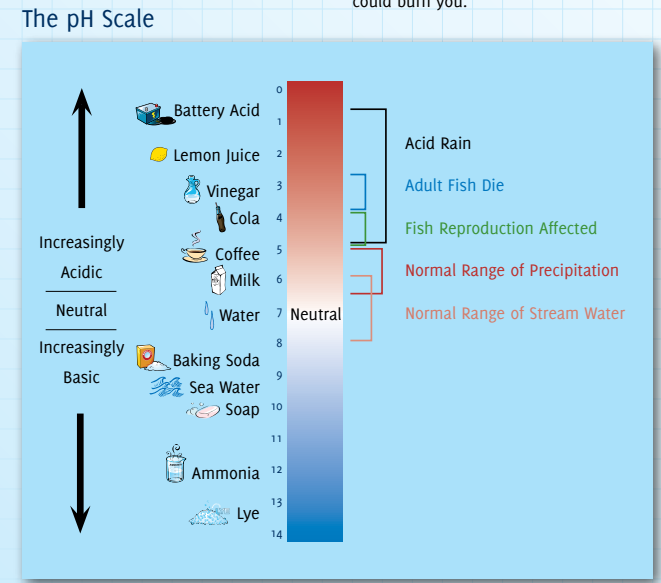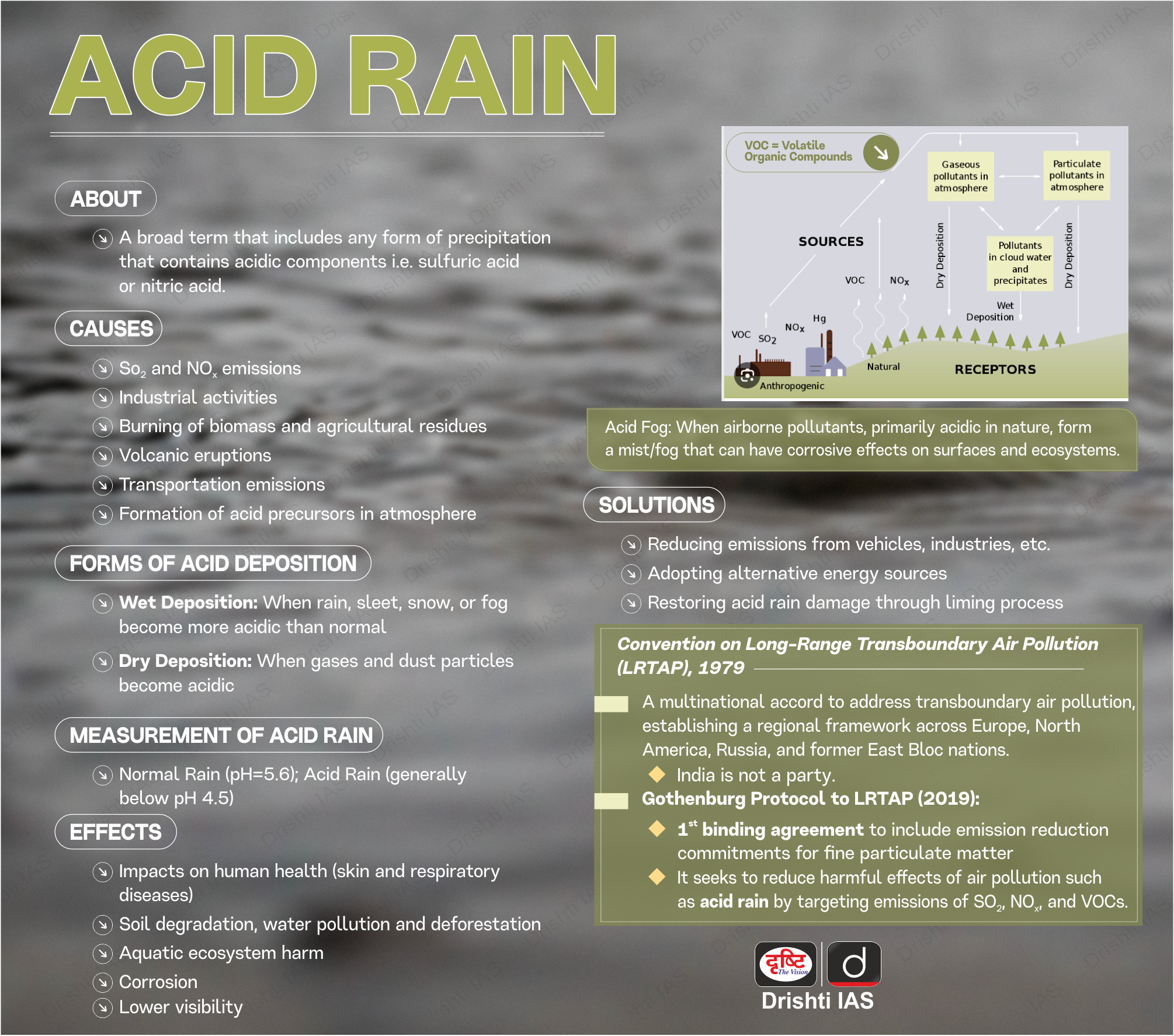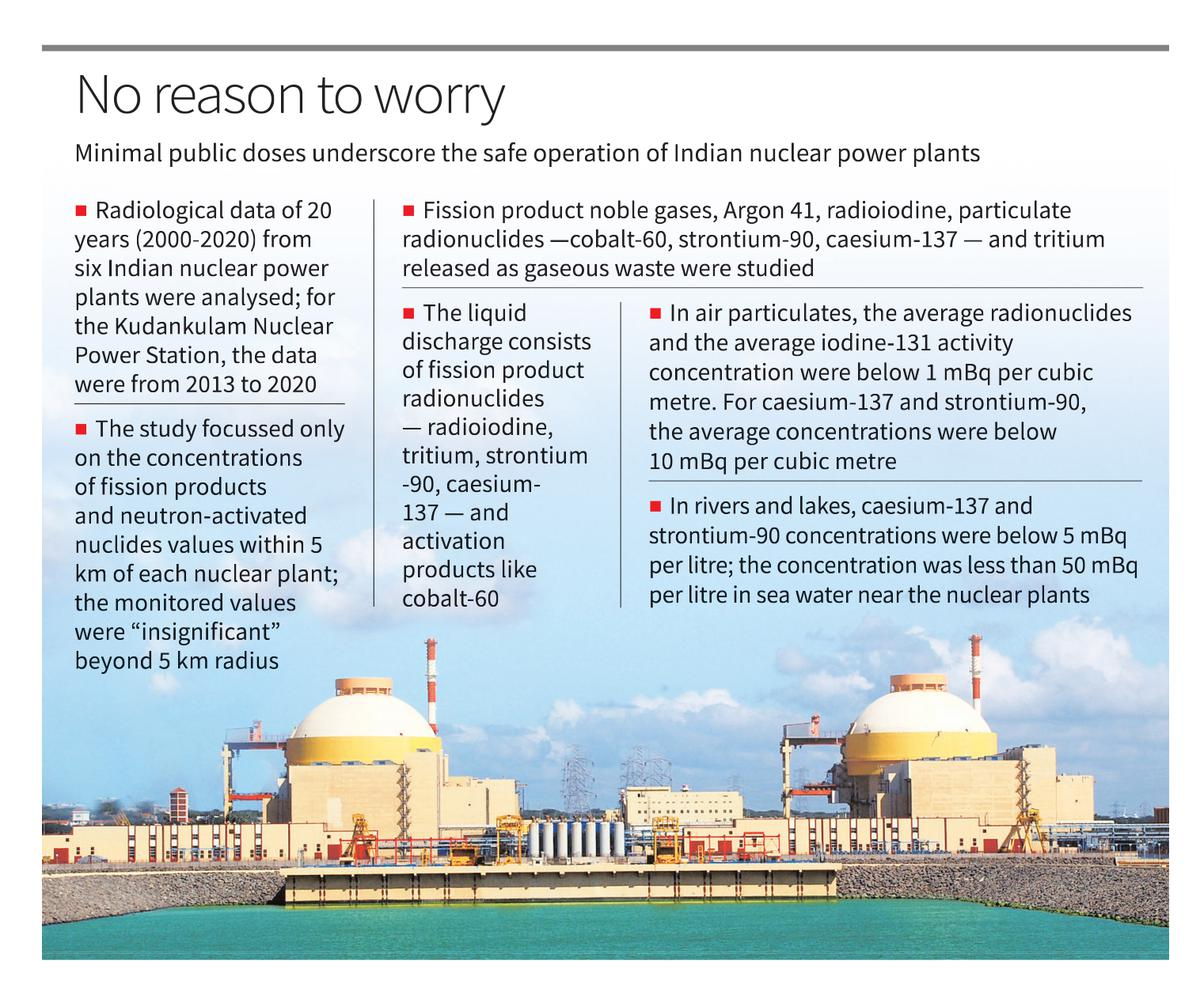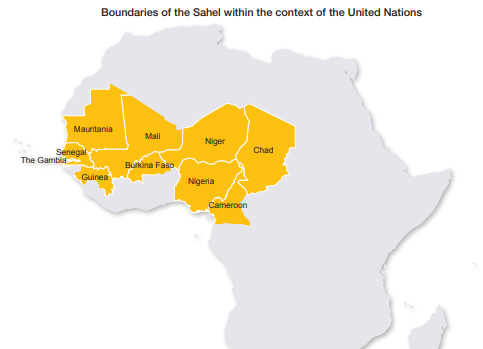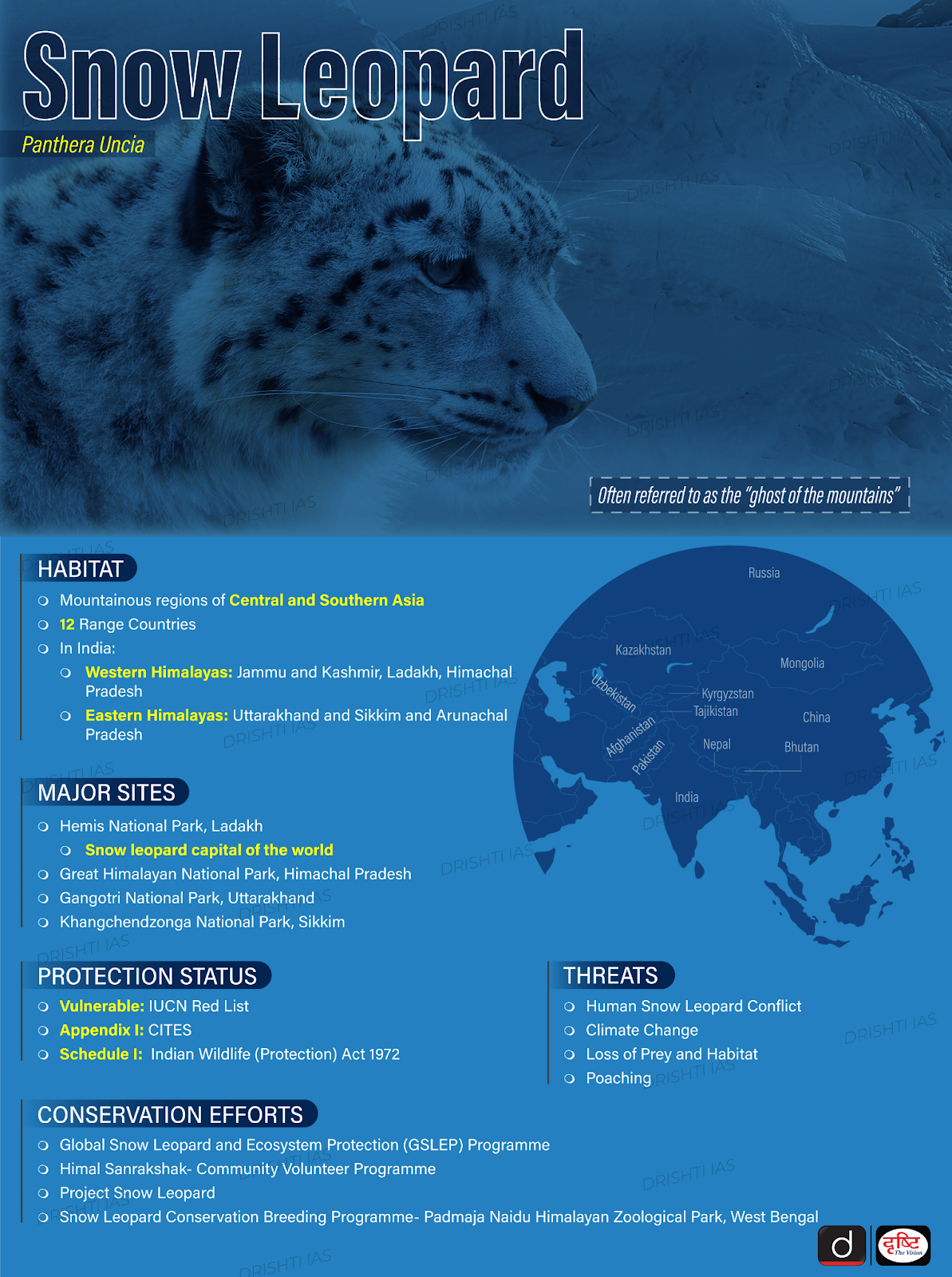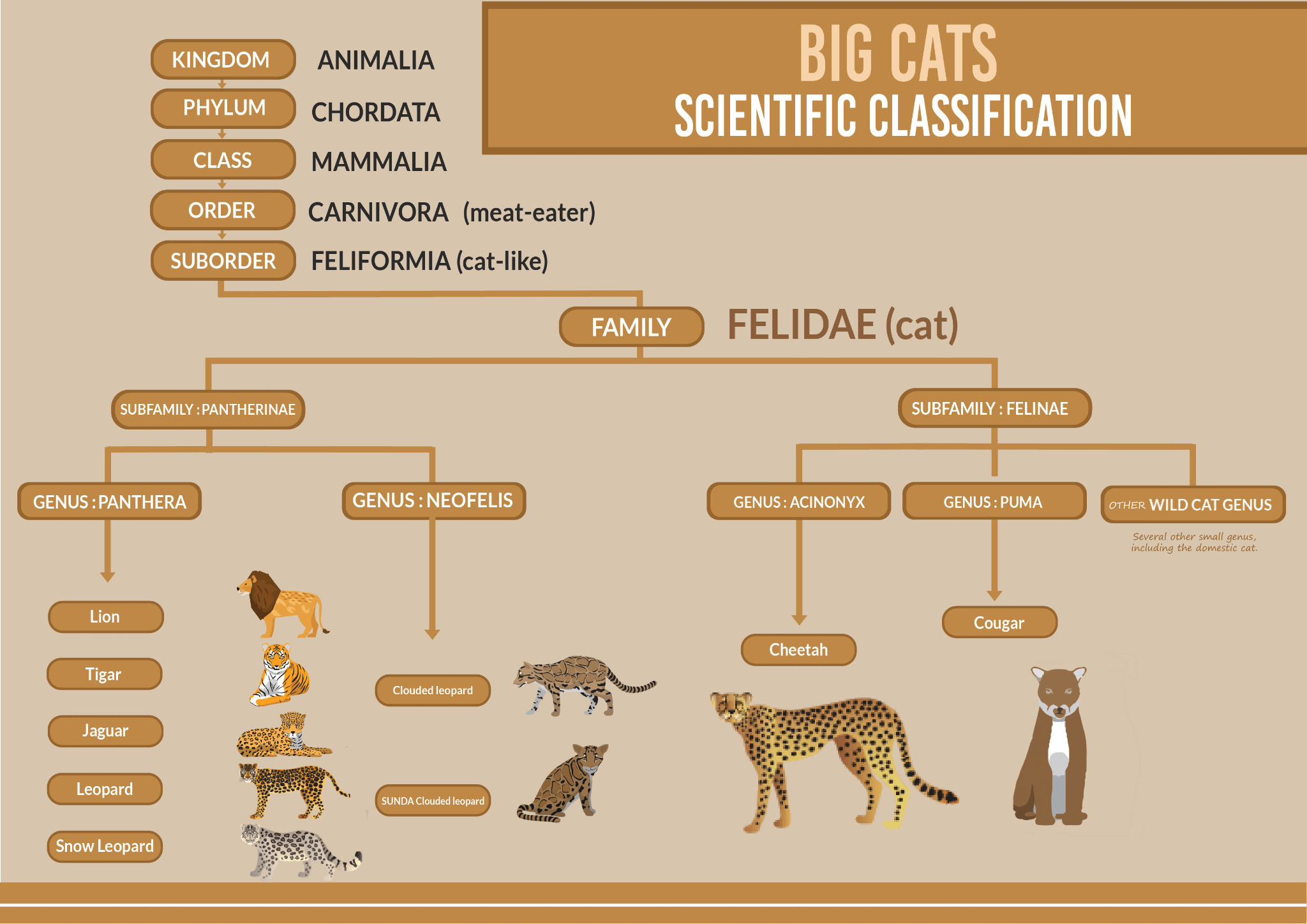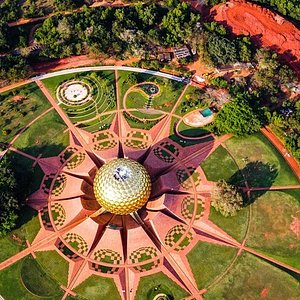Maratha Military Landscapes
For Prelims: UNESCO World Heritage Site, Western Ghats, Archaeological Survey of India, Chhatrapati Shivaji Maharaj
For Mains: Significance of UNESCO World Heritage sites, history of Marathas and Shivaji.
Why in News?
India is set to nominate the "Maratha Military Landscapes" for the United Nations Educational, Scientific and Cultural Organization (UNESCO) World Heritage recognition in 2024-25.
- This nomination comprises 12 components, showcasing the strategic military prowess of the Maratha rule across various regions.
What are the Maratha Military Landscapes?
- The ‘Maratha Military Landscapes’ is a network of 12 forts and fortifications that represent the extraordinary military system and strategy of the Maratha rulers in the 17th-19th centuries
- The twelve parts of this nomination are, Salher Fort, Shivneri Fort, Lohgad, Khanderi Fort, Raigad, Rajgad, Pratapgad, Suvarnadurg, Panhala Fort, Vijay durg, Sindhudurg in Maharashtra and Gingee Fort in Tamil Nadu.
- The Maratha Military Landscapes of India are included in the Tentative List of World Heritage sites in 2021.
- Maratha Military Landscapes is the sixth cultural property nominated for inclusion in the World Heritage List from Maharashtra.
- This network of forts, varying in hierarchies, scales and typological features, is a result of integrating the landscape, terrain and physiographic characteristics distinctive to the Western Ghats (Sahyadri Hills), the Konkan Coast, Deccan Plateau and the Eastern Ghats in the Indian Peninsula.
- There are more than 390 forts in Maharashtra out of which only 12 forts are selected under the Maratha Military Landscapes of India, of these 8 forts are protected by the Archaeological Survey of India.
- These are Shivneri Fort, Lohgad, Raigad, Suvarnadurg, Panhala Fort, Vijaydurg, Sindhudurg and Gingee Fort.
- Salher Fort, Rajgad, Khanderi Fort and Pratapgarh are protected by the Directorate of Archaeology and Museums, Government of Maharashtra.
- In the Maratha Military Landscapes of India Salher Fort, Shivneri Fort, Lohgad, Raigad, Rajgad and Gingee Fort are hill forts, Pratapgad is a hill-forest fort, Panhala is a hill-plateau fort, Vijaydurg is coastal fort whereas Khanderi fort, Suvarnadurg and Sindhudurg are island forts.
- The Maratha Military ideology originated in the 17th century under the rule of Chhatrapati Shivaji Maharaj in 1670 CE, extending through subsequent rulers until the Peshwa rule concluded in 1818 CE.
Note
- At present in India there are 42 World Heritage sites, out of which 34 are cultural sites, 7 are natural sites and one is mixed sites.
- In Maharashtra there are six World Heritage Sites, five cultural and one natural.
- These are, Ajanta Caves (1983), Ellora Caves (1983), Elephanta Caves (1987), Chhatrapati Shivaji Maharaj Terminus (formerly Victoria Terminus) (2004), Victorian Gothic and Art Deco Ensembles of Mumbai (2018) and western Ghats of Maharashtra, Karnataka, Tamil Nadu and Kerala is serial property in natural category (2012).
- In Maharashtra there are six World Heritage Sites, five cultural and one natural.
What is the Process for the UNESCO World Heritage List nomination?
- The World Heritage List is a list of sites that have outstanding universal value for humanity and nature, as determined by the United Nations Educational, Scientific and Cultural Organization (UNESCO).
- Before 2004, World Heritage sites were selected based on six cultural and four natural criteria.
- There are two categories of nomination cultural and natural criteria, the Maratha Military landscapes is nominated in the category of cultural criteria.
- There are six criteria (i to vi) for cultural sites and four criteria (vii to x) for natural sites for inclusion in the World Heritage List.
- The Maratha Military Landscapes of India is nominated under Criterion (iii), Criterion (iv) and Criterion (vi).
- A country can't nominate a property to the World Heritage List unless it's been on its Tentative List for at least one year.
- A Tentative List is an inventory of potential World Heritage Sites that a country submits to UNESCO. After a property is on the Tentative List, the country can nominate it for the World Heritage List. The World Heritage Committee will review the nomination.
- The list of World Heritage Sites is maintained by the International 'World Heritage Programme', administered by the UNESCO World Heritage Committee.
Read more: Chhatrapati Shivaji Maharaj
UPSC Civil Services Examination, Previous Year Question (PYQ)
Prelims:
Q. What was the immediate reason for Ahmad Shah Abdali to invade India and fight the Third Battle of Panipat? (2010)
(a) He wanted to avenge the expulsion by Marathas of his viceroy Timur Shah from Lahore
(b) The frustrated governor of Jullundhar Adina Beg Khan invited him to invade Punjab
(c) He wanted to punish Mughal administration for non-payment of the revenues of the Chahar Mahal (Gujarat, Aurangabad, Sialkot & Pasrur)
(d) He wanted to annex all the fertile plains of Punjab up to the borders of Delhi to his kingdom
Ans: (a)
Mains:
Q.1 Safeguarding the Indian Art Heritage is the need of the moment. Discuss. (2018)
Q.2 Indian Philosophy and tradition played a significant role in conceiving and shaping the monuments and their art in India. Discuss. (2020)
Free Movement Regime
For Prelims: Free Movement Regime, Issues in Myanmar, Treaty of Yandaboo, India's Act East policy, Manipur, India States Bordering Myanmar, Treaty of Friendship, 1951, Kaladan Multimodal Transit Transport Project.
For Mains: Potential Reasons for Reconsidering the FMR, Major Aspects of India-Myanmar Relations, India’s Border Issues.
Why in News?
India’s recent plans to review the Free Movement Regime (FMR) agreement with Myanmar and fence the India-Myanmar border have initiated discussions, especially in the northeastern states.
- The decision aims to address a complex intersection of historical, cultural, and security considerations.
What is the Free Movement Regime?
- Historical Context:
- Much of India's northeast region was under Burmese occupation until the Treaty of Yandaboo in 1826 established the current India-Myanmar boundary.
- The Treaty of Yandabo was signed by General Sir Archibald Campbell on behalf of the British and Governor of Legaing Maha Min Hla Kyaw Htin on behalf of the Burmese.
- It ended the First Anglo-Burmese War (1824-1826).
- The Treaty of Yandabo was signed by General Sir Archibald Campbell on behalf of the British and Governor of Legaing Maha Min Hla Kyaw Htin on behalf of the Burmese.
- However, the border separated communities with shared ethnicity and culture, including the Nagas in Nagaland and Manipur, as well as the Kuki-Chin-Mizo communities in Manipur and Mizoram, without their agreement.
- Currently, India and Myanmar share a 1,643 km border across Manipur, Mizoram, Nagaland and Arunachal Pradesh, of which only 10 km is fenced, in Manipur.
- Much of India's northeast region was under Burmese occupation until the Treaty of Yandaboo in 1826 established the current India-Myanmar boundary.
- Free Movement Regime:
- The FMR was established in 2018 as part of India's Act East policy, promoting cross-border movement up to 16 km without a visa.
- Individuals residing at the border need a one-year border pass for stays lasting up to two weeks in the neighbouring country.
- It aimed to facilitate local border trade, improve access to education and healthcare for border residents, and strengthen diplomatic ties.
- The FMR was established in 2018 as part of India's Act East policy, promoting cross-border movement up to 16 km without a visa.
- Potential Reasons for Reconsidering the FMR:
- Security Concerns:
- Increased Infiltration: Concerns have arisen about the influx of illegal immigrants, particularly the Chin, Naga communities and Rohingyas from Myanmar, potentially straining resources and impacting local demographics.
- Drug Trafficking and Arms Smuggling: The porous border facilitates the illegal movement of drugs and weapons, posing a threat to internal security to India and fueling crime.
- In 2022, Manipur witnessed 500 cases filed and 625 individuals arrested under the Narcotic Drugs and Psychotropic Substances (NDPS) Act, as per data from the Chief Minister’s Office.
- Insurgency Activities: The FMR has been misused by insurgent groups operating in northeastern India, allowing them to cross the border easily and evade capture.
- E.g. Kuki National Organisation (KNO) and Kangleipak Communist Party-Lamphel (KCP-Lamphel) in Manipur.
- Socio-economic and Regional Issues:
- Impact on cultural identity: Concerns exist about the preservation of indigenous culture and traditions in border areas, potentially threatened by increased migration.
- Environmental Degradation: Deforestation and illegal resource extraction along the border are attributed to unregulated cross-border movement.
- Regional Dynamics: China's growing influence in Myanmar and its potential impact on border security add another layer of complexity to the situation.
- Security Concerns:
What are the Major Aspects of India-Myanmar Relations?
- Historical and Cultural Ties: India and Myanmar share a long history dating back centuries, with cultural and religious connections deeply rooted in Buddhism.
- Treaty of Friendship, 1951 forms the foundation of their diplomatic relations.
- Economic Cooperation: India is Myanmar's 4th largest trading partner and a major source of investment.
- The projects in which India has been involved in Myanmar include the Kaladan Multimodal Transit Transport Project, the Trilateral Highway Project and restoration and conservation of Ananda Temple in Bagan (completed in 2018).
- Disaster Relief: India has responded promptly and effectively in rendering assistance following natural calamities in Myanmar like Cyclone Mora (2017), earthquake in Shan State (2010) and the outbreak of influenza virus in Yangon in July-August 2017.
Way Forward
- Focus on Shared Interests: Continuing and expanding economic cooperation in areas like infrastructure, energy, and trade could benefit both nations, fostering deeper ties beyond political differences.
- Also, encouraging cultural exchanges, religious tourism can build trust and understanding between the people of both countries.
- Comprehensive Border Management: India needs to develop a comprehensive and balanced approach to border management that considers security concerns while facilitating legitimate cross-border activities with Myanmar.
- Supporting a Democratic Transition: India's engagement in Myanmar should ultimately aim to support a peaceful transition to democracy in Myanmar, even if the process is slow and challenging.
- A stable and democratic Myanmar aligns with India's vision for regional stability and prosperity, making this a long-term strategic goal.
UPSC Civil Services Examination Previous Year Question (PYQ)
Prelims
Q. Department of Border Management is a Department of which one of the following Union Ministries? (2008)
(a) Ministry of Defence
(b) Ministry of Home Affairs
(c) Ministry of Shipping, Road Transport and Highways
(d) Ministry of Environment and Forests
Ans: (b)
Mains
Q1: Analyze the multidimensional challenges posed by external state and non-state actors, to the internal security of India. Also discuss measures required to be taken to combat these threats. (2021)
Q2: For effective border area management, discuss the steps required to be taken to deny local support to militants and also suggest ways to manage favourable perception among locals. (2020)
Q3: Border management is a complex task due to difficult terrain and hostile relations with some countries. Elucidate the challenges and strategies for effective border management.(2016)
Corruption Perception Index 2023
For Prelims: Transparency International, Corruption, World Justice Project (WJP), Least Developed Country (LDC).
For Mains: Corruption Perception Index 2023, Transparency & Accountability in Governance, Common Causes of Corruption and its Prevention in India.
Why in News?
Recently, the 2023 Corruption Perceptions Index (CPI) 2023 has been released by Transparency International showing that most countries have made little to no progress in tackling public sector corruption.
- The CPI ranks 180 countries and territories around the globe by their perceived levels of public sector corruption, scoring on a scale of 0 (highly corrupt) to 100 (very clean).
Transparency International
- It is an international non -governmental organisation founded in 1993 based in Berlin, Germany
- Its non-profit purpose is to take action to combat global Corruption with civil societal anti-corruption measures and to prevent criminal activities arising from corruption.
- Its most notable publications include the Global Corruption Barometer and the Corruption Perception Index.
What are the Key Highlights of the Corruption Perception Index (CPI) 2023?
- Serious Corruption Globally:
- Over two-thirds of countries score below 50 out of 100, which strongly indicates that they have serious Corruption problems.
- The global average score is stuck at only 43, while the vast majority of countries have made no progress or declined in the last decade.
- Global Highlights of CPI 2023:
- Top Three Countries: Denmark with a score of 90 tops the index for the sixth consecutive year, with Finland and New Zealand following closely with scores of 87 and 85, respectively.
- Due to well-functioning justice systems, these countries are also among the top scorers in the Rule of Law Index.
- Bottom Spots: Somalia, Venezuela, Syria, South Sudan and Yemen, with their scores 11, 13, 13, 13 respectively, take the bottom spots in the index.
- They are all affected by protracted crises, mostly armed conflicts.
- India's Rank and Score:
- India was ranked 93 out of 180 countries on the CPI 2023.
- The overall score for India in 2023 was 39, a slight decrease from 40 in 2022.
- In 2022, India was ranked 85.
- Top Three Countries: Denmark with a score of 90 tops the index for the sixth consecutive year, with Finland and New Zealand following closely with scores of 87 and 85, respectively.
- Link with Access to Justice and Corruption:
- According to the Rule of Law Index, the world is experiencing a decline in the functioning of justice systems.
- The Rule of Law Index is published by the World Justice Project (WJP), an independent organization that works to advance the rule of law globally.
- The index provides data on several dimensions of the rule of law, which are further broken down into 44 indicators.
- Countries with the lowest scores in the Rule of Law index are also scoring very low on the CPI, highlighting a clear connection between access to justice and corruption.
- According to the Rule of Law Index, the world is experiencing a decline in the functioning of justice systems.
- Factors Contributing to Corruption:
- Both authoritarian and democratic leaders are undermining justice. This is increasing impunity for corruption, and even encouraging it by eliminating consequences for criminals.
- Corrupt acts like bribery and abuse of power are also infiltrating many courts and other Judicial institutions across the globe.
- Where corruption is the norm, vulnerable people have restricted access to justice while the rich and powerful capture whole justice systems, at the expense of the common good.
- Key Recommendations:
- Corruption will continue to thrive until justice systems can punish wrongdoing and keep governments in check. When corruption persists and justice is influenced by money or politics, it harms the general public.
- It is high time to break the barriers and ensure people can access justice effectively. Everyone deserves fair and inclusive legal systems where victims’ voices are heard at every stage.
What is the State of Indian Neighbours in CPI 2023?
- Pakistan and Sri Lanka:
- Pakistan ranked 133 and Sri Lanka ranked 115 out of 180 countries.
- Both countries grappled with their respective debt burdens and political instability.
- However, both countries have strong judicial oversight, which helps to keep the government in check.
- The Supreme Court of Pakistan strengthened citizens' right to information by expanding this right under Article 19A of its Constitution to previously restricted institutions.
- Bangladesh:
- Bangladesh (ranked 149) emerges from the Least Developed Country (LDC) status, with economic growth supporting a continued reduction in poverty and improving living conditions.
- The flow of information on the public sector is hindered amidst an ongoing crackdown against the press.
- China:
- China (ranked 76) has its aggressive anti-corruption crackdown by punishing more than 3.7 million public officials for corruption over the last decade. In China public officials often use corruption as a way to drive up their income.
- However, the country's heavy reliance on punishment rather than institutional checks on power raises doubts over the long-term effectiveness of such anti-corruption measures.
What is Corruption?
- About:
- Collusive Corruption: This occurs when individuals or entities conspire together to achieve dishonest or fraudulent objectives. It involves a cooperative effort between parties, often for mutual benefit, to undermine the integrity of systems or processes.
- Coercive Corruption: In this form of corruption, individuals are compelled or forced to engage in dishonest activities.
- Those who abuse their power may be individuals or they may belong to organizations, such as businesses or governments.
- Reasons for Prevalence of Corruption in Public Service:
- Patronage: Civil service positions being used as rewards for political support or exchanged for bribes can lead to widespread corruption.
- When individuals are appointed based on loyalty rather than merit, it undermines the integrity of public institutions.
- Wage Disparities: Lower wages for civil servants compared to the private sector may create financial pressure. Some employees might resort to taking bribes as a means to offset the income disparity and meet their financial needs.
- Influence of Political Ideology: Political ideology's impact can nurture a corruption-friendly environment, where rewarding supporters irrespective of qualifications undermines fairness and accountability.
- This can compel individuals to resort to corruption to obtain or retain positions, perpetuating an unethical cycle.
- Patronage: Civil service positions being used as rewards for political support or exchanged for bribes can lead to widespread corruption.
What are the Implications of Corruption?
- On People and Public Life:
- Lack of Quality in Services: In a system with corruption, there is low or no quality of service.
- To demand quality, one might need to pay for it. This is seen in many areas like municipality, electricity, distribution of relief funds, etc.
- Lack of Proper Justice: Corruption in the judiciary system leads to improper justice and victims of offense might suffer.
- A crime may be proved as a benefit of the doubt due to a lack of evidence or even the evidence erased.
- Due to corruption in the police system, the investigation process has been going on for decades.
- Loss of Opportunity and Denial of Timely Service: Corruption not only inflicts financial and health-related challenges but also leads to a loss of opportunities for individuals.
- The denial of timely services, job opportunities, and fair access to resources perpetuates inequality and impedes societal progress.
- Lack of Quality in Services: In a system with corruption, there is low or no quality of service.
- On Society:
- Distrust in Government: Voters choose representatives based on trust, but if leaders are implicated in corruption, people lose faith and may abstain from voting next time (Voter Apathy).
- Discouraging Whistle-Blowing Activities: In corruption prone environment, individuals are often discouraged from engaging in whistle-blowing activities.
- Fear of retaliation, social stigma, or lack of effective protection mechanisms hinders the exposure of corrupt practices.
- Normalisation of Corruption: In societies where corrupt practices become normalised, individuals may gradually accept such behavior as a routine part of public life. It weakens ethical fabric, making it challenging to instigate meaningful reforms.
- On Economy:
- Lack of Ease of Doing Business: Corruption often involves bribes and kickbacks, adding to the costs of doing business.
- A Decrease in Foreign Investment: Corruption in government bodies has led to many foreign investments going back from developing countries.
- Lack of Development: Many new industries willing to get started in a particular region change their plans if the region is unsuitable.
- If there are no proper roads, water, and electricity, the companies do not wish to start up there, which hinders the economic progress of that region.
- Red Tapism: Red tapism refers to excessive bureaucratic procedures, complex regulations, and administrative delays, which can create an environment prone to corrupt practices
- Lack of Competition: Corruption often leads to the manipulation of markets, favoring certain businesses or individuals. This can result in monopolies or oligopolies, limiting competition and stifling innovation.
- Prevalence of Black Money and Black Market: Black money, which is income not declared to the government, results in reduced tax revenues.
- This limits the government's ability to fund essential public services and infrastructure projects.
- The existence of a large black market can undermine the formal economy, as legal businesses face unfair competition from those operating in the shadows.
What are the Indian Initiatives to Tackle Corruption?
- The Indian Penal Code, 1860
- Prevention of Corruption Act, 1988
- The Prevention of Money Laundering Act, 2002
- The Foreign Contribution (Regulation) Act, 2010
- The Companies Act, 2013
- The Lokpal and Lokayuktas Act, 2013
- Central Vigilance Commission
- Centralised Public Grievance Redress and Monitoring System (CPGRAMS)
Conclusion
- By establishing the Civil Service Board, the government can curb excessive political control. By simplifying the disciplinary process and strengthening preventive vigilance within the departments, it can be ensured that corrupt civil servants do not occupy sensitive positions.
- Government can work on capacity building programmes like iGOT-Karmayogi, which is is a continuous online training platform, which would allow all government servants from assistant secretary to secretary level to undergo continuous training, depending on their domain areas.
- It is important to emphasise value-based training to all civil servants to ensure probity in public life. Professional ethics should be an integral component in all the training courses and called for a comprehensive Code of Ethics for civil servants, based on the recommendations of the 2nd Administrative Reforms Commission (ARC).
UPSC Civil Services Examination, Previous Year Questions (PYQs)
Q1. With reference to the ‘Prohibition of Benami Property Transactions Act, 1988 (PBPT Act)’, consider the following statements: (2017)
- A property transaction is not treated as a benami transaction if the owner of the property is not aware of the transaction.
- Properties held benami are liable for confiscation by the Government.
- The Act provides for three authorities for investigations but does not provide for any appellate mechanism.
Which of the statements given above is/are correct?
(a) 1 only
(b) 2 only
(c) 1 and 3 only
(d) 2 and 3 only
Ans: (b)
Mains:
Q.2 Discuss how emerging technologies and globalisation contribute to money laundering. Elaborate measures to tackle the problem of money laundering both at national and international levels. (2021)
Q. “Institutional quality is a crucial driver of economic performance”. In this context suggest reforms in the Civil Service for strengthening democracy. (2020)
Acid Rain
For Prelims: Fossil Fuels, Acid Rain, Air Pollution, flue-gas desulphurisation, Acid Deposition Monitoring Network in East Asia (EANET).
For Mains: Acid Rain, Environmental pollution and degradation.
Why in News?
Acid Rain is a complex environmental issue with multiple causes and widespread consequences, and it has its origins in Fossil Fuels.
What is Acid Rain?
- About:
- Acid rain or acid deposition is a broad term that includes any form of precipitation with acidic components, such as sulfuric or nitric acid that fall to the ground from the atmosphere in wet or dry forms.
- This can include rain, snow, fog, hail or even dust that is acidic.
- Formation of Acid Rain:
- When SO2 (Sulphur Dioxide) and NOx (Nitrogen Oxide) combine with water and oxygen in the atmosphere, they form sulfuric acid (H2SO4) and nitric acid (HNO3), respectively.
- These acids then dissolve in water droplets, leading to the creation of acid rain, snow, or fog.
- The typical pH (Potential of Hydrogen) of acid rain is around 4.2-4.4, making it more acidic than normal rain (which has a pH of around 5.6).
- Causes of Acid Rain:
- Fossil Fuel Combustion: Burning Fossil Fuels, particularly those containing sulfur, release sulfur dioxide (SO2) and, at higher temperatures, nitrogen oxides (NOx).
- Fossil fuel combustion is prevalent in vehicles such as automobiles, and is a primary source of environmental pollutants.
- The combustion of coal in power plants and industrial processes also releases these substances.
- Natural Sources: Volcanic Eruptions and Lightning also contribute to the presence of sulfur dioxide and nitrogen oxides in the atmosphere.
- Air Pollution: In the atmosphere, the pollutants SO2 and NOx undergo chemical reactions, forming sulfuric and nitric acids.
- When combined with water vapor, they create acid rain during precipitation.
- Fossil Fuel Combustion: Burning Fossil Fuels, particularly those containing sulfur, release sulfur dioxide (SO2) and, at higher temperatures, nitrogen oxides (NOx).
- Forms of Acid Rain/Deposition:
- Wet Deposition: The sulfuric and nitric acids formed in the atmosphere fall to the ground mixed with rain, snow, fog, or hail.
- Dry Deposition: Acidic particles and gases can also deposit from the atmosphere in the absence of moisture as dry deposition.
- The acidic particles and gases may deposit to surfaces (water bodies, vegetation, buildings) quickly or may react during atmospheric transport to form larger particles that can be harmful to human health.
What are the Impacts of Acid Rain?
- Impact on Aquatic Life:
- Acid rain can make water bodies, such as rivers and lakes, inhospitable to certain species of aquatic life such as trout and fish.
- The increased acidity disrupts their reproductive patterns and can lead to fish population decline in affected rivers and lakes.
- Impacts on Marine Water and Species Distribution:
- The increased acidity alters the pH of marine environments, adversely impacting the distribution and survival of various organisms.
- Shell-forming marine species, like mollusks and certain types of plankton, face particular challenges as acidification interferes with their ability to build and maintain protective shells.
- Impacts on Physical Infrastructure:
- Acid rain poses substantial threats to physical structures and monuments, causing deterioration and discoloration.
- Notable examples include the Taj Mahal, whose iconic white marble has been affected, exhibiting a yellowish hue due to sulfuric acid reactions.
- Similarly, buildings, statues, and bridges made of limestone or marble are vulnerable to corrosion and decay.
- Acid rain accelerates the erosion of surfaces, compromising the structural integrity of architectural landmarks.
What are the Acid Rain Mitigation Measures?
- Flue-Gas Desulphurisation:
- Coal power plants have implemented technologies like flue-gas desulphurisation to reduce sulphur dioxide emissions by more than 90%.
- Graded Response Action Plan (GRAP):
- GRAP is a set of emergency measures that kick in to prevent further deterioration of air quality once it reaches a certain threshold in the Delhi-NCR region.
- It was approved by the Supreme Court in the case of M. C. Mehta vs. Union of India 2016 and notified in 2017.
- BS-VI vehicles
- New Commission for Air Quality Management
- Air Quality and Weather Forecasting and Research (SAFAR)
- National Air Quality Index (AQI)
- Air (Prevention and Control of Pollution) Act, 1981
- International Cooperation:
- Governments worldwide collaborate to minimize acid rain, as seen in initiatives such as the Acid Deposition Monitoring Network in East Asia (EANET).
- EANET is an intergovernmental initiative among East Asian countries to monitor and deal with acid deposition, which includes acid rain.
- It collects data on the deposition of acid substances, such as sulfur dioxide and nitrogen oxides, in the atmosphere and their subsequent impact on the environment, particularly ecosystems and water bodies.
- Governments worldwide collaborate to minimize acid rain, as seen in initiatives such as the Acid Deposition Monitoring Network in East Asia (EANET).
What are the Differences Between Acid and Base?
| Characteristic | Acids | Bases |
| Definition | Donate protons (H⁺ ions) | Accept protons (H⁺ ions) or donate pairs of electrons |
| pH on the Scale | Less than 7 (lower pH indicates stronger acid) | Greater than 7 (higher pH indicates stronger base) |
| Ion Formation | Produce hydrogen ions (H⁺) when dissolved in water | Produce hydroxide ions (OH⁻) when dissolved in water |
| Taste | Sour | Bitter |
| Feel (on Skin) | Can be corrosive and may cause a burning sensation | Slippery and soapy feeling |
| Examples | Hydrochloric acid (HCl), sulfuric acid (H₂SO₄) | Sodium hydroxide (NaOH), potassium hydroxide (KOH) |
Way Forward
- There is a need to implement sustainable practices, promoting renewable energy sources, enforcing stringent emissions regulations, fostering international cooperation, and investing in innovative technologies to address environmental challenges and combat climate change.
UPSC Civil Services Examination Previous Year Question (PYQ)
Prelims:
Q1. Why is there a concern about copper smelting plants?
- They may release lethal quantities of carbon monoxide into environment.
- The copper slag can cause the leaching of some heavy metals into environment.
- They may release sulphur dioxide as a pollutant.
Select the correct answer using the code given below.
(a) 1 and 2 only
(b) 2 and 3 only
(c) 1 and 3 only
(d) 1, 2 and 3
Ans: (b)
Exp:
- There are several different processes that can be used for copper production. One of the traditional processes is based on smelting in Reverberatory furnaces (or electric furnaces for more complex ores), producing matte (copper-iron sulphide). The matter from the furnace is charged to converters, where the molten material is oxidized in the presence of air to remove the iron and sulphur impurities (as converter slag) and to form blister copper.
- The principal air pollutants emitted from the process is sulphur dioxide and particulate matter and the main portion of the solid waste is discarded slag. Hence, statement 3 is correct.
- The slag produced can contain significant concentrations of a number of potentially toxic elements including arsenic, lead, cadmium, barium, zinc, etc. The slag can release these potentially toxic elements into the environment under natural weathering conditions and cause pollution of soils, surface waters and groundwater. Hence, statement 2 is correct.
- As slag is considered chemically inert, it is mixed with cement and is used to construct roads and railroad beds. It is also used for sandblasting. Moreover, it is also added to roofing shingles.
- Copper smelting does not release lethal quantities of carbon monoxide into the environment. Hence, statement 1 is not correct.
- Therefore, option (b) is the correct answer.
Q2. With reference to furnace oil, consider the following statements:
- It is a product of oil refineries.
- Some industries use it to generate power.
- Its use causes sulphur emissions into environment.
Which of the statements given above are correct?
(a) 1 and 2 only
(b) 2 and 3 only
(c) 1 and 3 only
(d) 1, 2 and 3
Ans: (d)
Exp:
- Furnace oil or fuel oil is a dark viscous residual product of crude-oil distillation. It is used as a fuel in different types of combustion equipment. The emissions of oxides of sulphur are a direct result of the sulphur content of the fuel oil. Hence, statements 1 and 3 are correct.
- Applications of Furnace oil:
- Marine engines and slow speed engines for power generation,
- Drying tea leaves,
- Gas turbines for power generation,
- Feed stock for fertiliser manufacturing,
- Thermic fluid heaters and hot air generators. Hence, statement 2 is correct.
- Therefore, option (d) is the correct answer.
Mains:
Q1. Describe the key points of the revised Global Air Quality Guidelines (AQGs) recently released by the World Health Organisation (WHO). How are these different from its last update in 2005? What changes in India’s National Clean Air Programme are required to achieve revised standards? (2021)
Q2. Environmental Impact Assessment studies are increasingly undertaken before a project is cleared by the Government. Discuss the environmental impacts of coal-fired thermal plants located at coal pitheads. (2014)
Radioactive Discharges from Indian Nuclear Plants
For Prelims: Minimal Radioactive Discharges from Indian Nuclear Plants, Bhabha Atomic Research Centre (BARC), Nuclear Fission, Implications of Radioactive Discharge.
For Mains: Minimal Radioactive Discharges from Indian Nuclear Plants, Environment Impact Assessment.
Why in News?
Recently, the researchers from Bhabha Atomic Research Centre (BARC) in an analysis has found that the Radioactive Discharges from Indian Nuclear Plants have been Minimal.
- The researchers analyzed the radiological data from six nuclear power plants in India over a period of 20 years (2000-2020).
Note
Radioactive discharge refers to the release of radioactive substances into the environment as a result of human activities, typically from nuclear facilities such as nuclear power plants, research reactors, or other industrial processes involving radioactive materials.
Bhabha Atomic Research Centre
- BARC is India’s premier nuclear research facility based in Mumbai, Maharashtra.
- It is a multi-disciplinary research center with extensive infrastructure for advanced research and development.
- Its core mandate is to sustain peaceful applications of nuclear energy, primarily for power generation.
What are the Key Findings of the Analysis?
- Minimal Environmental Impact:
- The radioactive discharges from the nuclear plants were found to have a minimal impact on the environment.
- The concentrations of fission products beyond 5 km radius have been below the minimum detectable activity of the instruments used, implying that the monitored values are “insignificant”.
- Types of Radioactive Discharges:
- Gaseous waste released into the atmosphere includes fission product noble gases, Argon 41, radioiodine, and particulate radionuclides (cobalt-60, strontium-90, caesium-137, and tritium).
- Liquid discharge consists of Fission product radionuclides, radioiodine, tritium, strontium -90, caesium-137 — and activation products like cobalt-60. .
- Radioactive discharges are carried out through dilution and dispersion, adhering to strict radiological and environmental regulatory regimes.
- Air Particulates:
- Average gross alpha activity in air particulates at all seven nuclear plants was less than 0.1 megabecquerel (mBq) per cubic meter.
- The Narora Atomic Power Station, Uttar Pradesh, exhibited higher maximum values, attributed to a higher atmospheric dust load.
- Specific Marker Concentrations:
- Average concentrations of radionuclides (iodine-131, caesium-137, and strontium-90) in air particulates across all sites were below 1 mBq per cubic meter.
- Concentrations of caesium-137 and strontium-90 in rivers, lakes, and sea water near the nuclear plants were below specified levels.
- Sediment Concentrations:
- The concentrations of caesium-137 and strontium-90 in sediments were within the statistical variation of values observed in natural sediments, without showing any trend of deposition or accumulation.
- Tritium Detection:
- Tritium was detectable above the minimum detectable activity at all sites except the Kudankulam Nuclear Power Station.
- Tritium concentrations were relatively higher at the Rajasthan Atomic Power Station.
What is the Significance of the Findings?
- The findings hold potential significance for reinforcing India’s commitment to advancing its nuclear power programme. The minimal public doses underscore the safe operation of Indian nuclear power plants.
What are the Implications of Radioactive Discharge?
- Environmental Impact:
- Radioactive substances released into the environment can impact ecosystems, affecting plants, animals, and microorganisms.
- Radioactive particles can settle on soil and sediment, leading to contamination. In water bodies, radioactive substances may accumulate, potentially affecting aquatic life.
- In 1986, the Chernobyl Disaster released a significant amount of radioactive particles into the atmosphere. These particles settled on soil and water bodies, leading to widespread contamination. The nearby Pripyat River and its tributaries were affected, impacting aquatic life.
- Human Health Concerns:
- Radioactive discharges can expose nearby populations to ionizing radiation. Prolonged or high-level exposure may increase the risk of radiation-related health issues, including cancer.
- People may inhale or ingest radioactive particles, especially through contaminated air, water, or food. This can lead to internal radiation exposure.
- In the Chernobyl disaster, the exposed population, including workers and nearby residents, experienced increased rates of thyroid cancer due to the release of iodine-131.
- Long-term Health Risks:
- Exposure to certain radioactive substances, such as strontium-90 and caesium-137, is associated with an increased risk of cancer, particularly if the exposure is prolonged.
- Ionizing radiation can potentially cause genetic mutations, increasing the risk of hereditary disorders in future generations.
- Impact on Agriculture and Food Chain:
- If radioactive substances enter the food chain, agricultural products and livestock may become contaminated, posing risks to consumers.
- In the 2011 Fukushima Nuclear Disaster, nuclear radiation contaminated agricultural products, such as rice and fish, raising concerns about food safety.
- Economic Consequences:
- Areas near nuclear facilities that experience radioactive discharges may see a decline in property values due to concerns about safety.
- Repeated incidents of radioactive discharge can harm the reputation of the nuclear industry, potentially affecting investment and development of new projects.
- Three Mile Island Accident (1979) contributed to a decline in public confidence in nuclear power, leading to increased regulatory scrutiny and a slowdown in the development of new nuclear projects in the United States.
What are the Initiatives Related to Safe Radioactive Discharge?
- International Conventions & Agreements:
- Convention on Early Notification of a Nuclear Accident: It is a treaty adopted in 1986 by the International Atomic Energy Agency (IAEA).
- The treaty requires countries to provide prompt notification of any nuclear accident that may affect other countries.
- Joint Convention on the Safety of Spent Fuel Management and on the Safety of Radioactive Waste Management: It is a 1997 treaty from the IAEA. It was the first treaty to address radioactive waste management on a global scale.
- It aims to address the safety of spent fuel management and radioactive waste management, including the prevention of accidents and minimizing potential radiological hazards.
- Convention on Nuclear Safety (CNS): The CNS is a legally-binding treaty that was adopted in 1994 and aims to ensure the safety of nuclear power plants. The CNS is an incentive-based treaty that requires states to establish and maintain a regulatory framework for nuclear safety. The CNS also aims to protect people, society, and the environment from the harmful effects of ionizing radiation.
- European Union (EU) Directives on Radioactive Waste and Spent Fuel Management: The European Union's (EU) Radioactive Waste and Spent Fuel Management Directive requires EU countries to have a national policy for managing radioactive waste and spent fuel.
- The directive also requires countries to create and implement national programs for managing these materials.
- Convention on Early Notification of a Nuclear Accident: It is a treaty adopted in 1986 by the International Atomic Energy Agency (IAEA).
- India’s Initiatives:
- Atomic Energy Regulatory Board (AERB): AERB serves as the regulatory body for nuclear and radiation safety in India. It establishes and enforces regulations, guidelines, and standards to ensure the safe operation of nuclear facilities, including measures for radioactive discharge.
- Environmental Impact Assessment (EIA): Nuclear projects, including power plants, are subject to rigorous environmental impact assessments. These assessments evaluate potential environmental and health impacts, including radioactive discharges, before a project is approved.
- Effluent Treatment and Dilution: Nuclear facilities employ effluent treatment systems to manage liquid radioactive waste before discharge. Dilution and dispersion techniques are often used to minimize the concentration of radioactive substances in discharges.
Previous Year Question (PYQ)
Q. To meet its rapidly growing energy demand, some opine that India should pursue research and development on thorium as the future fuel of nuclear energy. In this text, what advantage does thorium hold over uranium? (2012)
- Thorium is far more abundant in nature than uranium.
- On the basis of per unit mass of mined mineral, thorium can generate more energy compared to natural uranium.
- Thorium produces less harmful waste compared to uranium.
Which of the statements given above is/are correct?
(a) 1 only
(b) 2 and 3 only
(c) 1 and 3 only
(d) 1, 2 and 3
Ans: (d)
Q. Which among the following has the world’s largest reserves of Uranium? (2009)
(a) Australia
(b) Canada
(c) Russian Federation
(d) USA
Ans: (a)
Economic Community of West African States
Why in News?
- Recently, the military regimes in Burkina Faso, Mali and Niger announced their immediate withdrawal from the West African bloc Economic Community of West African States (ECOWAS).
What is ECOWAS?
- About: ECOWAS is a regional grouping aimed to promote economic integration and shared development of the West African sub-region.
- It was established in May 1975 by 15 West African countries in Lagos, Nigeria.
- Founding members: Benin, Burkina Faso, Côte d’Ivoire, The Gambia, Ghana, Guinea, Guinea Bissau, Liberia, Mali, Mauritania, Niger, Nigeria, Sierra Leone, Sénégal, and Togo.
- Headquarters: Abuja, Nigeria.
- Major Initiatives: ECOWAS established its free trade area in 1990 and adopted a common external tariff in January 2015.
- It has also worked to address some security issues by developing a peacekeeping force for conflicts in the region.
- Troops were initially sent to Liberia in 1990 during its civil war and to Sierra Leone in 1997 following the overthrow of a democratically elected government.
- It has also worked to address some security issues by developing a peacekeeping force for conflicts in the region.
- India-ECOWAS Relation:
- India has a long-standing relationship with ECOWAS and was given the status of observer to the body in 2004.
- In 2006, India gave the grouping a line of credit (LoC) worth USD 250 million.
- ECOWAS has also supported India’s bid for a permanent seat in the United Nations Security Council.
- India has a long-standing relationship with ECOWAS and was given the status of observer to the body in 2004.
Note
Recently the French military pullout from the Sahel region has raised concerns about the potential spread of conflicts to Gulf of Guinea states such as Ghana, Togo, Benin, and Ivory Coast
Key Points About Sahel Region:
- Sahel is a semiarid region of western and north-central Africa extending from Senegal eastward to Sudan.
- It forms a transitional zone between the arid Sahara (desert) to the north and the belt of humid savannas to the south.
- It is one of the world's richest, gifted with vast energy and mineral resources such as oil, gold and uranium.
- However, political instability hinder development progress.
- United Nations (UN) limits the Sahel to ten (10) countries: Burkina Faso, Cameroon, The Gambia, Guinea, Mali, Mauritania, Niger, Nigeria, Senegal and Chad.
UPSC Civil Services Examination, Previous Year Question:
Prelims
Q. In recent years Chad, Guinea, Mali and Sudan caught international attention for which one of the following reasons is common to all of them? (2023)
(a) Discovery of rich deposits of rare earth elements
(b) Establishment of Chinese military bases
(c) Southward expansion of Sahara Desert
(d) Successful coups
Ans: (d)
Mains:
Q. “Africa was chopped into states artificially created by accident of European competition”. Analyze. (2013)
Snow Leopard Population Assessment in India
Why in News?
The National Board for Wildlife meeting in New Delhi witnessed the release of the report on the Status of Snow Leopards in India by the Union Minister of Environment, Forest, and Climate Change (MoEFCC).
- This report is a result of the Snow Leopard Population Assessment in India (SPAI) Program, a significant scientific exercise that provides crucial insights into the snow leopard population in India.
What is the Snow Leopard Population Assessment in India (SPAI) Program?
- The SPAI Program is the first-ever comprehensive scientific exercise aimed at assessing the population of snow leopards in India.
- The Wildlife Institute of India (WII) served as the National Coordinator for the SPAI, with support from snow leopard range states and conservation partners, the Nature Conservation Foundation (NCF), Mysuru and World Wildlife Fund(WWF)-India.
- The SPAI systematically covered over 70% of the potential snow leopard habitat across the trans-Himalayan region, including UTs of Ladakh and Jammu and Kashmir, and states such as Himachal Pradesh, Uttarakhand, Sikkim, and Arunachal Pradesh.
- The assessment was conducted from 2019 to 2023 using a meticulous two-step framework, including evaluating snow leopard spatial distribution and estimating snow leopard abundance using camera traps.
Note
- The Nature Conservation Foundation (NCF), Mysore is a non-governmental organisation that focuses on the conservation of India's wildlife and ecosystems.
- WWF-India, established as a Charitable Trust on 27th November 1969. It is a science-based organization which addresses issues such as the conservation of species and its habitats, climate change, water and environmental education, among many others.
- WWF-India Secretariat is an autonomous office based in New Delhi. It is part of WWF International.
What are the Key Highlights of the Report?
- Findings:
- The SPAI exercise recorded a snow leopard population of 718 individuals in India, providing crucial data for conservation efforts.
- The report detailed the estimated presence of snow leopards in different states: Ladakh (477), Uttarakhand (124), Himachal Pradesh (51), Arunachal Pradesh (36), Sikkim (21), and Jammu and Kashmir (9).
- The SPAI exercise recorded a snow leopard population of 718 individuals in India, providing crucial data for conservation efforts.
- Conservation Efforts and Recommendations:
- The report emphasises the need for establishing a dedicated Snow Leopard Cell at WII under the MoEFCC to focus on long-term population monitoring.
- Consistent monitoring through periodic population estimation is proposed to ensure the long-term survival of snow leopards and to identify challenges, address threats, and formulate effective conservation strategies.
National Board for Wildlife
- The National Board for Wildlife (NBWL) is the apex body in India for all wildlife-related matters.
- It is a statutory body constituted under Section 5A of the Wildlife (Protection) Act, 1972.
- It advises the government on policy matters concerned with wildlife conservation and preservation, and approves projects in and around national parks and other protected areas.
- The NBWL is chaired by the Prime Minister and comprises 47 members, including three Members of Parliament, five NGOs, and 10 eminent ecologists, conservationists, and environmentalists.
UPSC Civil Services Examination Previous Year Question (PYQ)
Prelims
Q. Consider the following: (2012)
- Black-necked crane
- Cheetah
- Flying squirrel
- Snow leopard
Which of the above are naturally found in India?
(a) 1, 2 and 3 only
(b) 1, 3 and 4 only
(c) 2 and 4 only
(d) 1, 2, 3 and 4
Ans: (b)
D.K. Basu Case
The Supreme Court expressed its oral observations on the 2022 incident in Gujarat where four police officers were involved in publicly flogging an individual who was tied to a pole, accusing him of disrupting a garba event.
- SC questioned the authority of the officers to engage in such acts, emphasising the 1996 D.K. Basu judgment against police abuse.
- The D.K. Basu judgment addressed that while the police have the legal duty to arrest and interrogate criminals, the law strictly prohibits the use of third-degree methods or torture during custody.
- Third degree method originally referred to the physical brutality used by police officers during interrogations, but over time, it has come to encompass various forms of abuse, including psychological pressure, sleep deprivation, and other forms of mistreatment.
Read more: Custodial Violence
Auroville Exposure Tour
As part of the Ek Bharat Shreshtha Bharat (EBSB) initiative, students immersed themselves in sustainable living during the Auroville Exposure Tour.
- Auroville is a universal township in the making for a population of up to 50,000 people from around the world.
- It is located in Viluppuram district of Tamil Nadu (some parts are in Puducherry).
- It was founded by Mirra Alfassa in 1968 to implement Sri Aurobindo's vision of new forms of individual and collective life.
- It was officially endorsed by UNESCO in 1966, it focuses on sustainable living and addressing the future cultural, environmental, social, and spiritual needs of humanity.
Read more: Sri Aurobindo
India's Core Industries Performance
The combined Index of Eight Core Industries (ICI) in India exhibited a provisional growth of 3.8% in December 2023 compared to 2022. Except crude oil, all other sectors have majorly performed well.
- The ICI serves as a crucial metric, encompassing Cement, Coal, Crude Oil, Electricity, Fertilizers, Natural Gas, Refinery Products, and Steel, collectively constituting 40.27% of the Index of Industrial Production (IIP).
- IIP is a prime indicator of economic development for the measurement of trends in the behaviour of Industrial Production over a period of time with reference to a chosen base year.
- Current base year for the IIP in India is 2011-12.
Read more: Index of Industrial Production
Raising Day of ICG
The Indian Coast Guard (ICG) celebrated its 48th Raising Day on 1st February 2024.
- The interim Indian Coast Guard (ICG) came into being on 1st February 1977. The ICG in its present shape was formally inaugurated on 18th August 1978 as an independent armed force of the Union government with the enactment of the Coast Guard Act 1978, to prevent the sea-borne smuggling of goods that hampered the economy.
- The ICG is India's maritime security force, the responsibilities of the ICG include offshore security, marine safety, and coastal security as well as safeguarding India’s Exclusive Economic Zone (EEZ).
- The force maintains order in international shipping lanes and India's vast seas.
- According to the Comptroller and Auditor General of India, ICG department is ranked as the fourth largest Coast Guard in the world.
Read more: Indian Coast Guard



 World Heritage Sites.png)
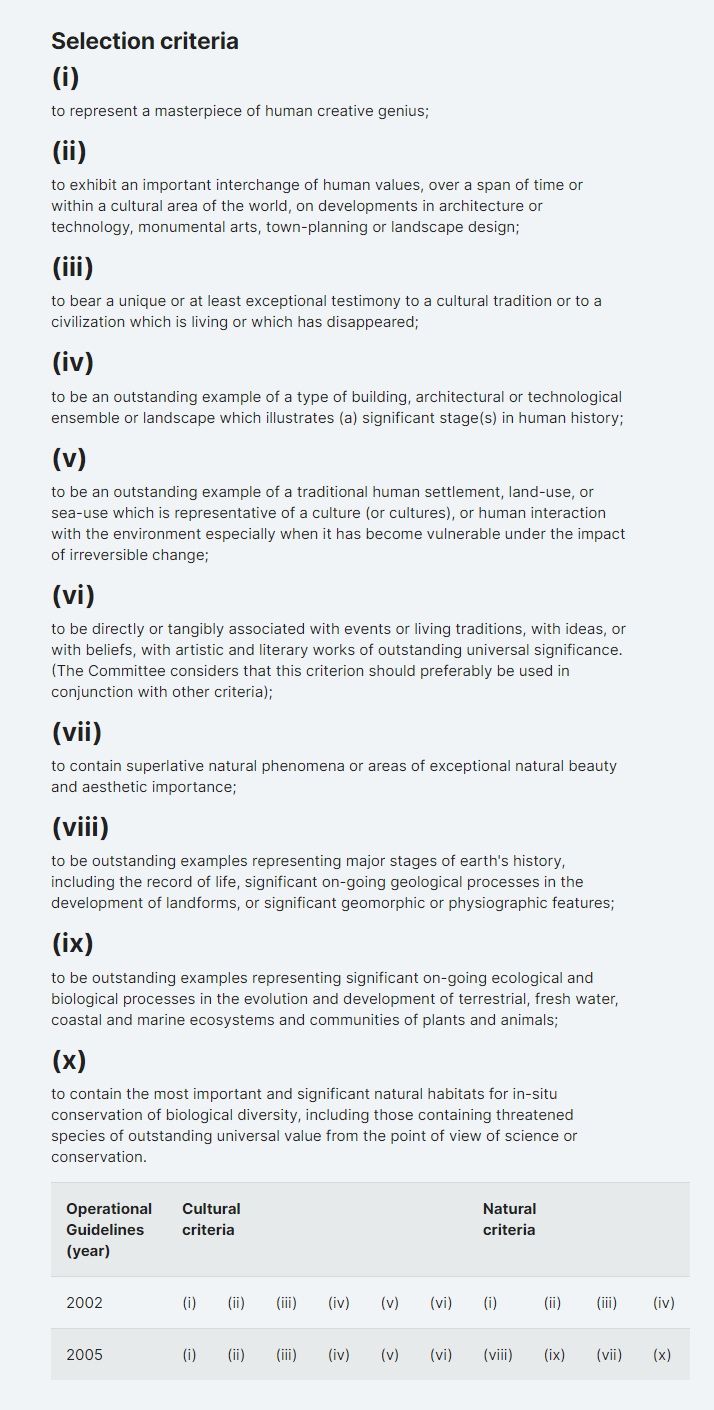

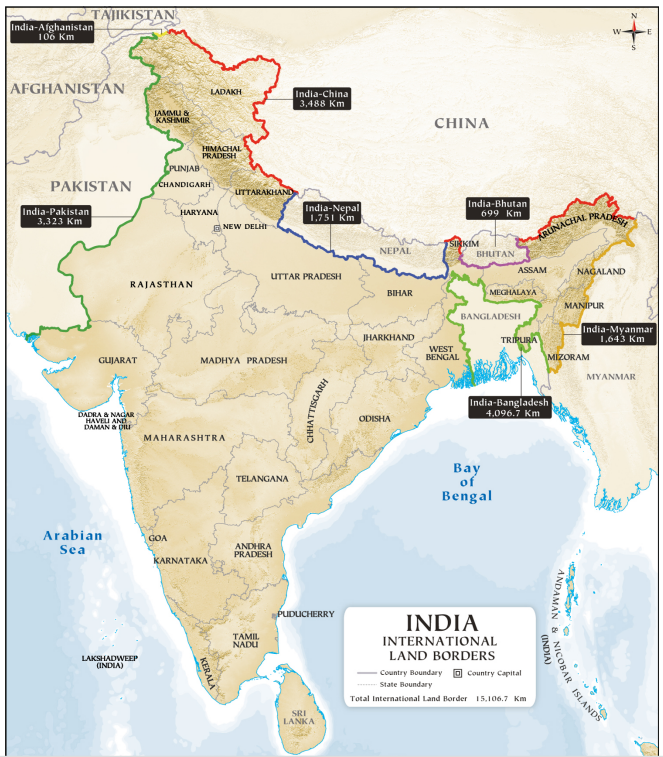
 2023.png)
.png)
